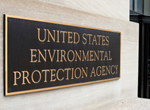 |
Because EPA-issued environmental permits often have the greatest impact on local and regional communities, the Agency’s regional offices have undertaken the role of helping “overburdened” communities take part in the permit application process of facilities in their jurisdiction. This role required each regional office to create an EJ implementation plan based on EPA’s Actions that EPA Regional Offices Are Taking to Promote Meaningful Engagement in the Permitting Process by Overburdened Communities (EPA Actions). These plans are customized to meet the many different geographic, industrial, demographic, and environmental characteristics of each region and will be updated periodically as experiences and circumstances warrant.
The two primary goals of the implementation plans are to:
1) Help regional offices identify which permits to prioritize for enhanced outreach to overburdened communities, and
2) Suggest activities the regional offices can undertake to promote greater public involvement in their permitting process.
Need an answer fast? Relax. Our editors guarantee a personalized response to your questions within 3 business days. Take a free trial of Enviro.BLR.com® and see what everyone is talking about. For a limited time, also receive a free 2013 EHS Salary Guide. Download Now
Although regional offices are allowed flexibility in deciding which EPA Actions to use in their plans, the EPA provided numerous tested and researched options for both goals. Regarding which permits to prioritize, the EPA cited a list of permit types most likely to involve significant environmental impacts, including:
- Clean Air Act (CAA) construction permits, especially new major sources or major modifications of criteria pollutants;
- Safe Drinking Water Act (SDWA) Significant Underground Injection Control Program permits;
- Clean Water Act (CWA) “Major” industrial National Pollution Discharge Elimination System (NPDES) permits as defined in 40 CFR 122.2 for new source, new dischargers, and many major modifications;
- CWA “Non-Major” industrial NPDES permits for new sources, new discharges, and many major modifications (as identified by the EPA).
- Resource Conservation and Recovery Act (RCRA) permits for new combustion facilities and modifications to existing permits addressing new treatment processes or corrective action cleanups involving potential for off-site impacts.
This list is not considered all inclusive nor will a permit meeting one of the requirements automatically be a priority permit, and regional offices have the autonomy to consider all factors in the prioritization process for enhanced outreach. Also important to note is that a permit may be prioritized for enhanced outreach even though it does not impact an overburdened community.
Everything You Need for Environmental Compliance
Enviro.BLR.com puts everything you need at your fingertips, including practical RCRA, CAA, CWA, hazardous waste regulatory analysis and activity, news, and compliance tools. Try it at no cost or risk and get a FREE report.
For those permits that regional offices do prioritize, the EPA provides additional activities to help overburdened communities actively participate in the permit application process. Again, this is not an exhaustive list and regional offices may choose those activities that best fit their needs.
1) Planning and gathering information includes identifying upcoming priority permits focusing on permits identified by the community. Also obtain relevant community information, research community outreach mechanisms within the EPA, assess opportunities to cooperate with state, local, and tribal authorities, evaluate public comment periods, and be prepared to request extensions, and consider holding information meetings in addition to formal public comment meetings.
2) Coordinate with the EPA when the permit applicant holds multiple EPA permits.
3) Communicate with the community by creating points of contact, plain language informational materials, appropriate communication pathways (list serves, local news outlets, mailings, etc.), provide for multilingual community needs in communications, make key documents available via different media tools such as online or paper copies, plan public meetings to maximize attendance and comply with comment periods, and follow up with post-permit information from the EPA.
4) Communicate with the permit applicant and encourage it to provide the EPA with a plain-language description of the project/permit and to familiarize themselves with EPA’s Plan EJ 2014 and Promising Practices for Permit Applicants Seeking EPA-Issues Permits: Ways to Engage Neighboring Communities (Promising Practices) and to implement them throughout the permit application process.
